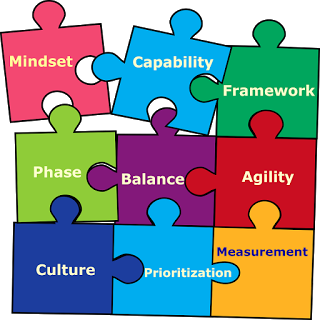The New Book “Unpuzzling Innovation” Introduction Chapter 2 Innovation Principles
 We are approaching the digital world with complexity, hyper-connectivity, and the highest level of education ever, and as a result, more people are competing in an increasingly competitive global arena. We also see much more innovation in more and more areas of the business landscapes as a result of an increasingly well-educated population across the globe. The purpose of Innovation Management is just so simple: If you work hard, have a good idea, and deliver to your customers, you will be rewarded. But it takes principle, strategy, discipline, and daily practices to flex your innovation muscle.
We are approaching the digital world with complexity, hyper-connectivity, and the highest level of education ever, and as a result, more people are competing in an increasingly competitive global arena. We also see much more innovation in more and more areas of the business landscapes as a result of an increasingly well-educated population across the globe. The purpose of Innovation Management is just so simple: If you work hard, have a good idea, and deliver to your customers, you will be rewarded. But it takes principle, strategy, discipline, and daily practices to flex your innovation muscle. Being innovative is more important than any specific innovation: Innovativeness is a way of thinking. We don’t really know the future of the industry or the environment, but we prepare ourselves to create it better and compete in it. While the change was often previously discrete, intermittent, and predictable, it is now constant and unpredictable, so often we need to change the way we change, it starts at the mindset level.
Looking at innovation from the perspective of developing business-wide innovation capabilities: Innovation has three “D” phases: Discovery of a problem or new idea; Design a prototype solution, and Delivery of a commercially astute outcome. That is the view to see innovation as a system, capable of delivering organization-wide capability.
Building an effective innovation framework to manage innovation in a structural way: The process to support the creation of sustainable and systematic innovation can be structuredInnovation Management system includes policies, structure, and program that innovation managers can use to drive innovation. You apply principles of approach and vary the resource and tool mix by the ever changing environment, you need to make sure, that your company has a steady flow of fresh ideas floating in and you have a methodological platform that allows you to do that.
 Businesses need to determine where best to focus their innovation activities: The “moment of Eureka” may be very exciting, but hanging on for the long term adoption and extended use phases could become quickly challenging and exhausting. So it pays to learn to view innovation matters realistically, and manage innovation phases and processes effectively.
Businesses need to determine where best to focus their innovation activities: The “moment of Eureka” may be very exciting, but hanging on for the long term adoption and extended use phases could become quickly challenging and exhausting. So it pays to learn to view innovation matters realistically, and manage innovation phases and processes effectively. Successful innovation is findly the bridge between “push” and “pull”: The minimum requirement for innovation is that the product, process, marketing method or organizational method must be new to the firm. “Pushing” only is not efficient to drive innovation, because idea creation scenario takes brainstorming, collaboration, knowledge absorbing and insight capture. Hence, it’s important for managers to pull all necessary resource and build a culture of creativity to harvest and make new ideas fruitful.
………
Innovation is the development of a new combination of available resources, in a way that solves problems of others in a more suitable way. From a business management perspective, shaping innovative mindsets, setting innovation principles, building innovation capabilities, and cultivating innovation agility are all crucial in making innovation management more practical than just serendipity.Follow us at: @Pearl_Zhu
Published on November 24, 2016 22:52
No comments have been added yet.



